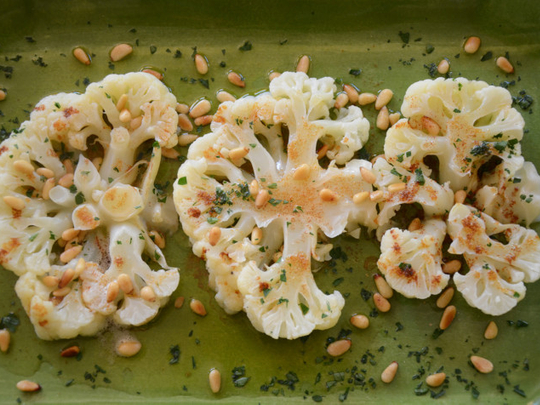
The start of October, like the last day of summer camp, is a day for saying goodbye. Warm-weather, long-day crops such as tomatoes are losing their flavour, if there are any left at all. But we’re welcoming root crops and winter greens as we tune our pleasures to another station on the dial.
If you haven’t yet learnt to do that, here’s a suggestion that works for me. Make brown butter.
In my opinion, most vegetables, especially cold-weather ones, taste best when dressed with a little fat. It complements their flavours and makes them luxurious rather than just good for you. By all means celebrate the fall harvest, the raccolto, of Tuscan olive oil by dousing root vegetables with it and roasting them in the oven. But few fats deliver as much flavour as brown butter.
You make brown butter by simmering it until the liquid component evaporates, leaving milky solids that turn a golden tan and impart a delicious nuttiness. (One of the French words for it is beurre noisette, a noisette being a little nut or, more specifically, a hazelnut.)
Using a pan with a bottom pale enough to watch the colour change, keep the heat low or the butter will foam over. As brown bits appear, stir constantly to keep them from sticking to the bottom, because they carry the flavour. Remove it from the heat immediately and pour into another container, lest they turn a bitter black. Any not used immediately can be stored as a spread.
Winter greens, especially pale ones such as green cabbage and blanched escarole, are delicious steamed, drizzled with brown butter and sprinkled with caraway seeds. Bake some large onions, peeled and cut in half crosswise, in a covered casserole with a little water, and serve them with brown butter poured between the concentric rings. If you like that, do the same thing with leeks.
I love to pour brown butter over mashed potatoes, making small valleys with a spatula for the butter to run in. This works for mashed celery root, too, and potatoes and celery root combined. If the idea of flowing rivers of butter scares you, if you consider butter your own personal “Kryptonite”, take comfort in the fact that browning adds so much flavour that you could get away with less.
Personally, I find these dishes — not to mention sole swimming in a little brown butter pond — a birthright, even if it means skipping dessert.
The steam-and-drizzle or bake-and-drizzle techniques would work equally well with carrots, perhaps with a little honey added. Try either method with peeled, sliced rounds of butternut squash, with a dusting of nutmeg or cardamom.
A brown butter topping is a major inducement to feast on turnips, sliced or mashed. It wakes up the pale, almost-blandness of kohlrabi, maybe with a bit of crisp-crumbled sage. And what it does to white cauliflower is a small miracle. I’ll cut a head into florets and steam it, or slice it and bake it as “steaks”, made doubly nutty with brown butter and pine nuts.
And then there’s parsnips. Bearing in mind the old saying “Soft words butter no parsnips”, I’ll give it to you straight: yes, brown butter is fabulous on parsnips. Olive oil is not.
— Washington Post













